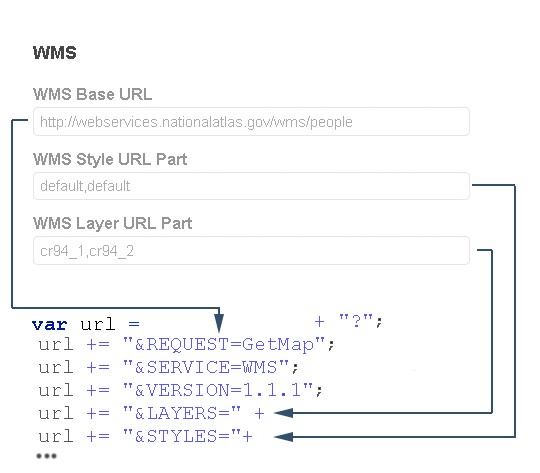Web Map Service (WMS) Layers
WMS, or Web Map Service, is a standard protocol for serving geospatial images from a central WMS server. These images, commonly referred to as map tiles, can then be overlaid on top of a map to add new dimensions of data.
A WMS server can have many different layers that represent these independent sets of data. These layers can be selectively chosen and then combined by the WMS server to form a single, composite view of the data that is relevant to you and your customers.  You can think of these layers as separate panes of glass that have different map features drawn on them which can then be stacked on top of each other to compare and contrast different dimensions of data.
WMS URL
To use WMS in CMaps Analytics you must have access to a WMS server via a URL. If you are trying to access your own WMS server your IT personal should be able to provide this to you.Typically a WMS URL will originate from your GIS server and serves to provide a complete list of layers and looks like this:
http://sedac.ciesin.org/geoserver/ows?service=wms&version=1.3.0&request=GetCapabilities
This is NOT the URL that you will insert into CMaps Analytics Designer. Instead, details from the WMS URL are utilized to fill in the base URL, Style, and Layer. The following are details for the
WMS Base URL
The WMS base URL should not include any parameters. When CMaps Analytics requests a WMS layer, it will automatically populate parameters based on the WMS Style and Layer inputs.
Example:
http://sedac.ciesin.org/geoserver/ows
Layer and Style Properties
The layer and style values are found within the WMS XML. You are looking for <LAYER> and <STYLE> nodes and the contents within. The example WMS template included in CMaps Analytics is displayed along with the highlighted values.

WMS Layer URL Part
The WMS layer is contained within the WMS feed. <Layer><Name>Layer Name Value</Name></Layer>
Example: ndh:ndh-earthquake-mortality-risks-distribution
WMS Style URL Part
The WMS layer is contained within the WMS feed. <Style><Name>Layer Name Value</Name></Style>
Example: ndh-earthquake-mortality-risks-distribution:default


